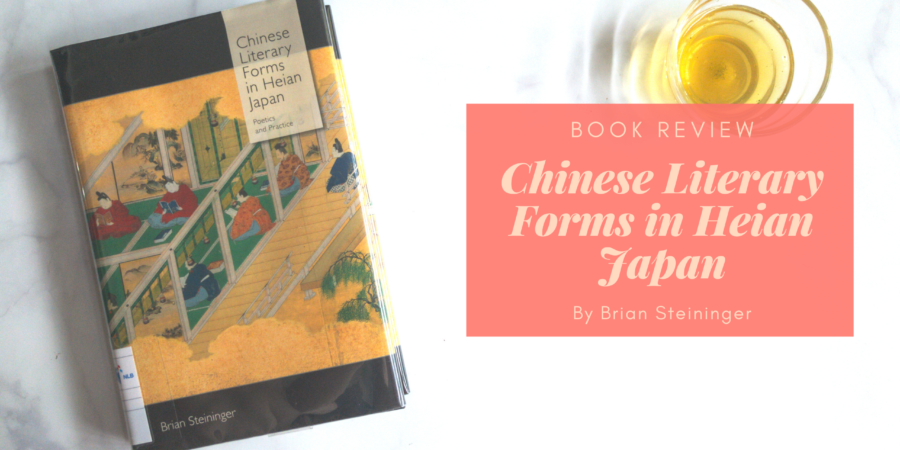After a really long time, we’re back in my ‘World of Genji’ series, where I attempt to learn more about Heian Japan and not have my head explode as I read academic texts about the time period. This book, Chinese Literary Forms in Heian Japan, was really interesting as it explored Sinitic verse (aka when the Japanese were writing only in Chinese) but also was a challenge to get through.
For those of you who are curious about the book but don’t want to read it, here’s my summary. There are five chapters in the book and they are:
1. Gifts and Governors: examining the tenth century text Utsuho monogatari. I found the section at the start on the trends in changes in bureaucracy to be interesting – apparently as the tendency for sons to succeed their fathers increased, thanks to the ie system, bureaucracy became drastically simplified, “with the original chain of command under the bureaus and ministries replaced by direct administration of offices by the controllers (ben) or secretaries (geki) of the Council of State, who reported to a particular senior noble with oversight over that office.”
This Utsuho monogatari is also really interesting, especially since it predates The Tale of Genji by at least two decades. It’s got two plotlines, but what makes it interesting is that while The Tale of Genji speaks from the point of nobility, the Utsuho Monogatari “speaks from the perspective of one of the courtiers, part of the daily action of court ceremony and yet a step removed from the royalty and senior nobles at the center of it.”
2. Honcho monzui and the Social Dynamics of Literary Culture: The Honcho Monzui is an eleventh century anthology “characterised by syntactic parallelism, allusions to Chinese lore, and tonal prosody.” For me, what was interesting was that despite the fact that classical education was seen as something necessary for the nobility, education itself was not highly valued. The book points out an episode in The Tale of Genji where the Kiritsubo emperor remarks that “in dancing and gesture, the wellborn (ie no ko) are different. One admires the renowned professional dancers, but they lack that easy grace.”
In other words: poor people can make their way up through learning but they are always going to be different from well-bred people (but you well-born people better study too!)
3. Couplet Collections and Aesthetic Strategy: This delved into parallelism, a distinguishing feature of literary works. According to the book, literary Sinitic parallelism is based upon the unit of the couplet and “Couplet anthologies present figural language stripped of a social aim; the laments and prayers of the jukkai couplets drop away, leaving rhetorical mechanics floating out of time.”
4. Glosses and Primers: This chapter was very interesting because we go into education in the Heian era. There was a State Academy, but despite some effort to get the children of nobility to go there, it ended up being “a technical training ground for mid-to-low-level bureaucrats”, especially since the children of nobility ended up being educated by tutors (who would have graduated from the State Academy, so it’s not like it had zero influence).
This chapter also introduces the concept of kunten, which are marks written into a text to aid its oral performance (a practice from China). This leads quite nicely into the final chapter:
5. Reading Out Loud: Although reforms in the Heian era were based on China, Japan still managed to keep an oral tradition. For example, there were provisions to let a messenger supply details verbally, and decision making could be done by a functionary reading aloud the document and the decision pronounced orally. Because of this emphasis on reading aloud, a crucial but unwritten element of Heian literary Sinitic involved being able to improvise a correct kundoku reading on the spot.
If you think about the fact that it’s only five chapters, Chinese Literary Forms in Heian Japan isn’t that long, but Steininger writes in such a formal academic tone that the book feels a lot longer. It was, quite honestly, a struggle to get through this and I probably would not have been able to write this review if I had not been taking notes at the same time.
This is definitely not for casual history students or people looking to get into Heian history (I think The World of the Shining Prince by Morris would be a better option). But if you’re already deep into the weeds and reading about medieval Japan in Japanese, then you might as well pick this up and look into another aspect of Heian society.

That cover is just absolutely beautiful, not a book for me though I don’t think
I don’t think it’s a book for most people! It’s really inaccessible imo